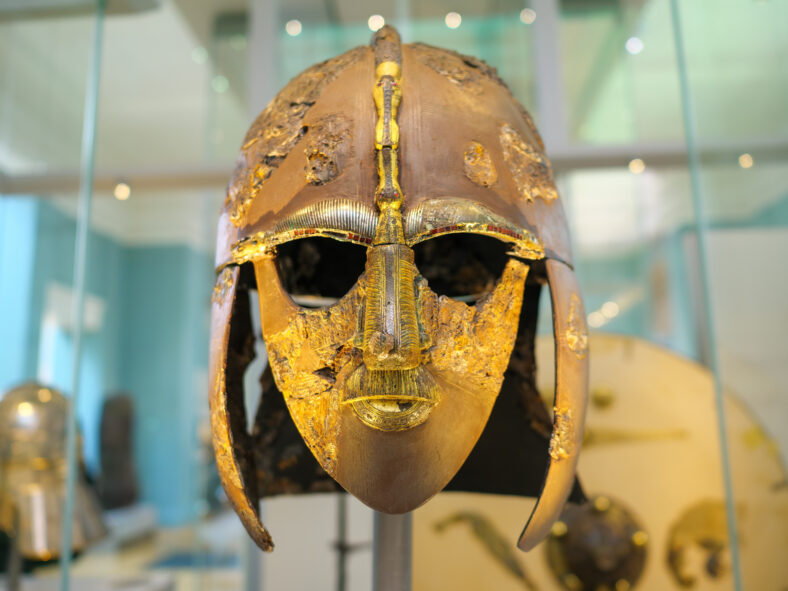This Helmet Might Be Evidence That Early Anglo-Saxons Acted As Mercenaries For The Byzantine Empire

A helmet found among the artifacts from the ship burial at Sutton Hoo in England may serve as evidence that early Anglo-Saxon warriors fought as mercenaries for the Byzantine Empire in the 6th century.
Based on the features of the helmet and its corresponding chain mail coat, which was found near it, the artifacts are copies of Byzantine armor.
Their presence at the ship burial suggests that the man laid to rest there brought them back after fighting in the Far East.
The armor was crafted in the unique Anglo-Saxon style. The warrior possibly asked English workers to make an ornate copy, which was the one he was later buried with.
According to Helen Gittos, a study author and medieval historian at the University of Oxford, the chain mail coat is badly rusted.
The helmet was encrusted with gold and jewels. It also contains articulated cheek guards and a neck guard, which are key features of Roman helmets.
Some of the artifacts from other early English graves and settlements seem to suggest that there were Anglo-Saxon warriors who fought for the Byzantine Empire against the Sasanian Persians. This idea challenges the belief that such objects were acquired through trade.
The Sutton Hoo site was discovered in 1939, right before World War II began. At the time, many artifacts were unearthed, but it wasn’t until 2003 that the findings were better understood with the discovery of the “Prittlewell Prince.” He was an Anglo-Saxon nobleman who was buried in the Essex region, located east of London.
Unlike the Sutton Hoo graves, the Prittlewell grave was not ravaged by looters. It dates back between 580 and 605. The Prittlewell grave contained silver spoons, metal bowls, and a bronze pitcher that appeared to have been made in the eastern Mediterranean. The “prince” likely acquired them while fighting in the Far East.

Sign up for Chip Chick’s newsletter and get stories like this delivered to your inbox.
Other early English graves held artifacts that indicated contact with the Byzantines centuries before some Anglo-Saxons served as bodyguards in the Byzantine Varangian Guard.
“Those who returned brought back with them metalwork and other items which current, and distinctive, and not the kinds of things that were part of normal trading networks,” Gittos said.
In the 570s, Byzantine leaders launched a military campaign against the Sasanian Persians, who threatened their territories in the East. Historical records show that the Byzantines recruited mercenary fighters at that time. The soldiers were promised payment in gold.
They were provided with a suit of armor and money to buy any weapons and equipment they needed. In the graves of early Anglo-Saxon warriors, horse equipment and even the skeletons of horses were found, highlighting their valuable skill as horsemen.
The details of the study were published in The English Historical Review.
More About:News